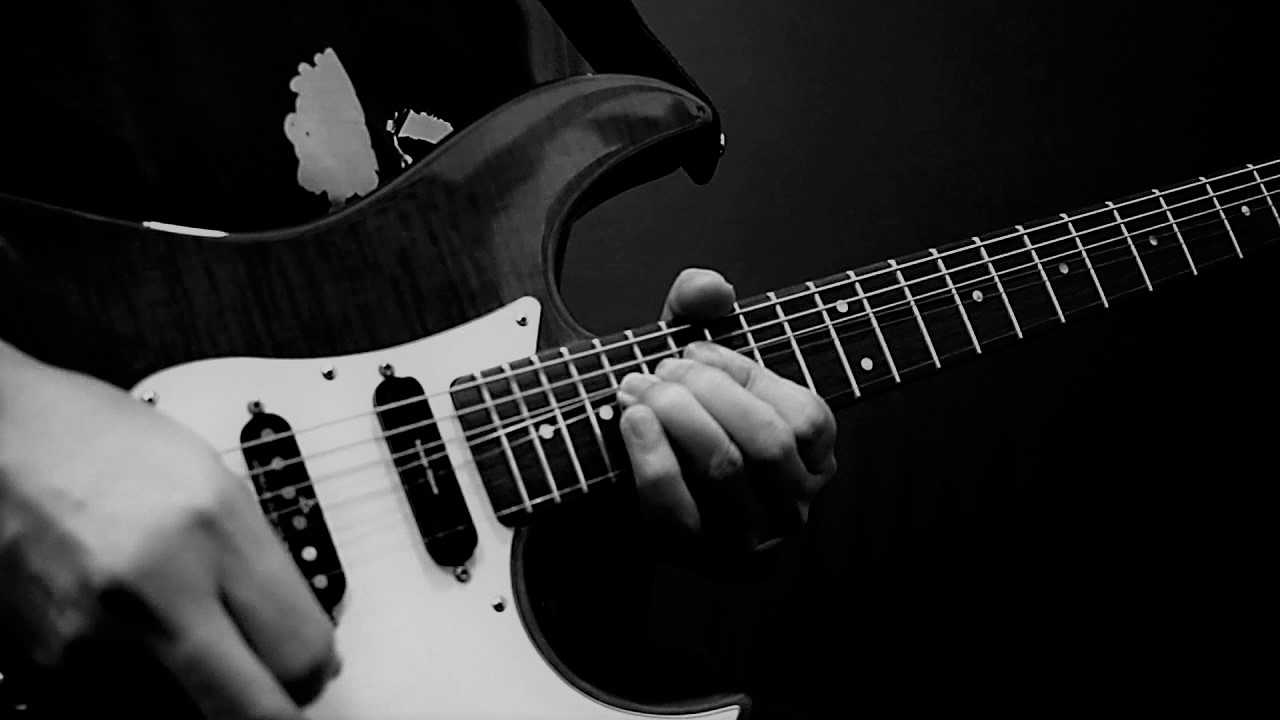If you think you know your scales, think again – your knowledge may be incomplete. A lot of players equate knowing a scale with knowing the patterns and how to find it on the fretboard. This isn’t even half the story, let alone a fifth of the story, as there are at least 5 different ways that I can think of to know a scale – if you think of any more, let me know in the comments.
So, you know the fingering pattern for a scale, but do you know:
The Sound
Many guitarists know a ton of scales – fingering patterns – and have even played them for years on end. Strange thing is, they have trouble naming a scale from its sound in isolation, even easily distinguishable scales like the modes. Think of scale, then try to imagine how it sounds or sing it if you can. If you found that difficult, you need to spend some quality time with a simple one-octave scale shape like the one below and really get to know the sound.

Here you have an E Lydian scale pattern which you can use along with the open low (or high) E string as a drone to really practice hearing the scale in its purest form.
The Intervals
It’s important to know the intervals in a scale for several reasons, not least because this is what makes one scale different from another. If you look at the above pattern for the Lydian scale, you’ll see the intervals 1, 2, 3, #4, 5, 6, 7. In this article, we looked at writing out interval sequences that replace the 2 with a 9, the 4 with an 11, and the 6 with a 13. If we apply this to the Lydian scale we get: 1, 9, 3, #11, 5, 13, 7 – which immediately tells us that we can use this scale over extended chords such as maj#11, maj9#11 and so on. Therefore, if you know the intervals in a chord, you can match them up with the intervals in a scale.
The Note Names
While you might think it’s enough to know where to find the root note to then reel off your scale pattern, you might want to consider learning the note names in the scale you’re playing. I don’t mean that you have to sit there and learn note names parrot-fashion, just slow down and make a mental note of the notes in the scale from time to time. This will help you a great deal if you’re learning to read, as well as being a device to learn the notes on the neck and feel more confident when you improvise.
The Grand Scheme of Things
If you have a pattern like the Lydian one above, you should also know that E Lydian is the fourth mode of B Major and therefore contains the same notes. Being a mode of the major scale, it is also part of a sequence of chords:
B, C#m, D#m, E, F#, G#m, A#m7b5
For this to make more sense, start the chord sequence from E:
E, F#, G#m, A#m7b5, B, C#m, D#m
Just by knowing this, you now have a bunch of chords from which to create a Lydian vibe, just make sure you relate them to E and not B.
The Optimum Fingering Pattern
The fingering pattern you choose for a scale is also very important – note that I say choose here – because a lot of players tend to think that they have to learn scales using the CAGED or 3NPS patterns when these are probably not the most usable scale patterns on a guitar fretboard. In general, the more patterns you have to deal with, the longer it will take for the information to become useful. If you like 3NPS patterns, there’s a way to use just three patterns to cover the entire neck instead of the time-consuming seven. If you’re learning a new scale, there’s no reason why you can’t arrange the notes so that they fall comfortably for you, rather than being a slave to some arbitrary pattern. Here’s a Lydian b7 scale pattern in A with the notes arranged as if they were overlaying box 1 of the A Minor Pentatonic scale. My fretting hand will be in much the same position, so it immediately feels comfortable and familiar, as oppose to a clunky CAGED or 3NPS pattern for the same scale. You will be able to incorporate new ideas and concepts into your playing much quicker if you can relate or link them to ones that are already second nature.

As we saw in How to Make Any Scale Pattern More Musical, not all intervals in a scale were created equally and shouldn’t be treated equally either. Make a mental note of where the root, thirds and sevenths are as these will outline the changes you’re playing over. In the case of our Lydian scales above, the #4 is what makes them stand out and gives them that Lydian vibe. The 2 (9) and the 6 (13) aren’t notes you’ll want to resolve on, so use them to transition to other more critical intervals in the scale. This is why a lot of players sound very bland when playing scales other than pentatonics – they’re giving each note equal importance when they should be crafting phrases that make certain intervals stand out.If you want to take this further, check out the 2 Position Guitar Scale System which provides you with just enough information to put the above into action and really learn your scales inside out.



